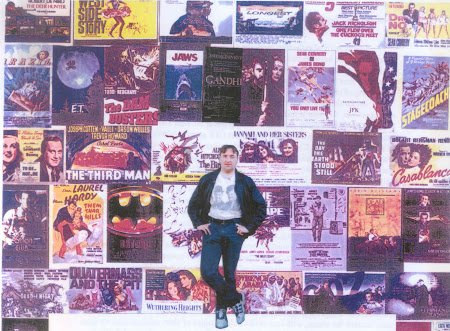
As much as Laurel and Hardy were inseparable, immortal cinema icons, so too were Tom and Jerry.
To the average viewer this pair might be associated more with TV than film (even though TV has often had its censorship problems with its perceived racist stereotyping and cartoon "violence"), but the cinema was where they started, and therefore very much where they deserve to be in this collection.
Essentially the David and Goliath scenario taken to highly comedic lengths, Warner Brothers had Tweetie Pie and Sylvester (who was originally named "Thomas"), but the top studio of the time, MGM, had the best of the bunch. Their first cartoon short, Puss Gets the Boot, ironically named the cat as "Jasper" - whether the moniker "Tom and Jerry" had anything to do with the nickname for the British and the German armies is speculative, but the duo certainly hit it off as the best of enemies, and the item that brought them the most acclaim, deservedly, was The Cat Concerto.
An all-musical piece (using for the most part, Liszt's Hungarian Rhapsody No. 2 in C Sharp Minor, skilfully played by musical director Scott Bradley) in the style of Disney's Silly Symphonies, Hanna and Barbera go one better by staging it with all the pompous formality of the concert hall. By a coincidence there was also a Bugs Bunny cartoon made simultaneously (which led to lawsuits and counter-suits between the two studios), Rhapsody Rabbit, which doesn't really cut the mustard as well as this masterpiece.
What fits in so perfectly with Tom & Jerry's style is the complete absence of dialogue between the characters, allowing the music almost totally to choreograph the gags, and all within the enclosed setting of the piano and its players. The plot is quintessential T&J: the cat has fun playing around with his prey, until the mouse strikes back. Various comic mayhem ensues, until the final battle, with the little guy (unlike in real life) usually coming out on top.
 It's possibly fair to say that Morecambe and Wise found their comedic inspiration for their classic TV spot with Andre Previn from The Cat Concerto. I can also understand how future classical musicians would have first become aware of classical music through this cartoon.
It's possibly fair to say that Morecambe and Wise found their comedic inspiration for their classic TV spot with Andre Previn from The Cat Concerto. I can also understand how future classical musicians would have first become aware of classical music through this cartoon.It was the second Tom & Jerry cartoon to receive an Oscar (after Yankee Doodle Mouse), and was to be followed by Tom and Jerry in the Hollywood Bowl, which arguably topped The Cat Concerto by hilariously staging Johann Strauss's overture to Die Fledermaus - in it's entirety, without the interruption of "modern" music that briefly slips in to TCC. A third Oscar winner for Hanna and Barbera (and their supervising producer Fred Quimby) was Johann Mouse (1952), yet another classical music entry, completing a memorable classical trilogy, of sorts.

Of the others, Quiet Please! is a personal favourite, featuring that other great adversary of Tom's (and Jerry's secret weapon!), Spike the dog, forever plagued by the cat's chasing around, and usually grumpy enough to take it out on poor old Tom once pushed too far. The Little Orphan is a delightful little item celebrating Thanksgiving, with a scene-stealing feisty little mouse named "Tufty" (in later incarnations) who despite his size has the appetite of a hippo, and gets into plenty of trouble for it.
DR. JEKYLL AND MR. MOUSE. Tom's attempts to turn demonic and savage have unfortunate side effects!
Finally there is the seasonal delight Night Before Christmas, in which Jerry is chucked out into the snow, but a remorseful Tom lets him back in to warm up in front of the fire. The resulting final gag with a mousetrap is a sheer joy.























